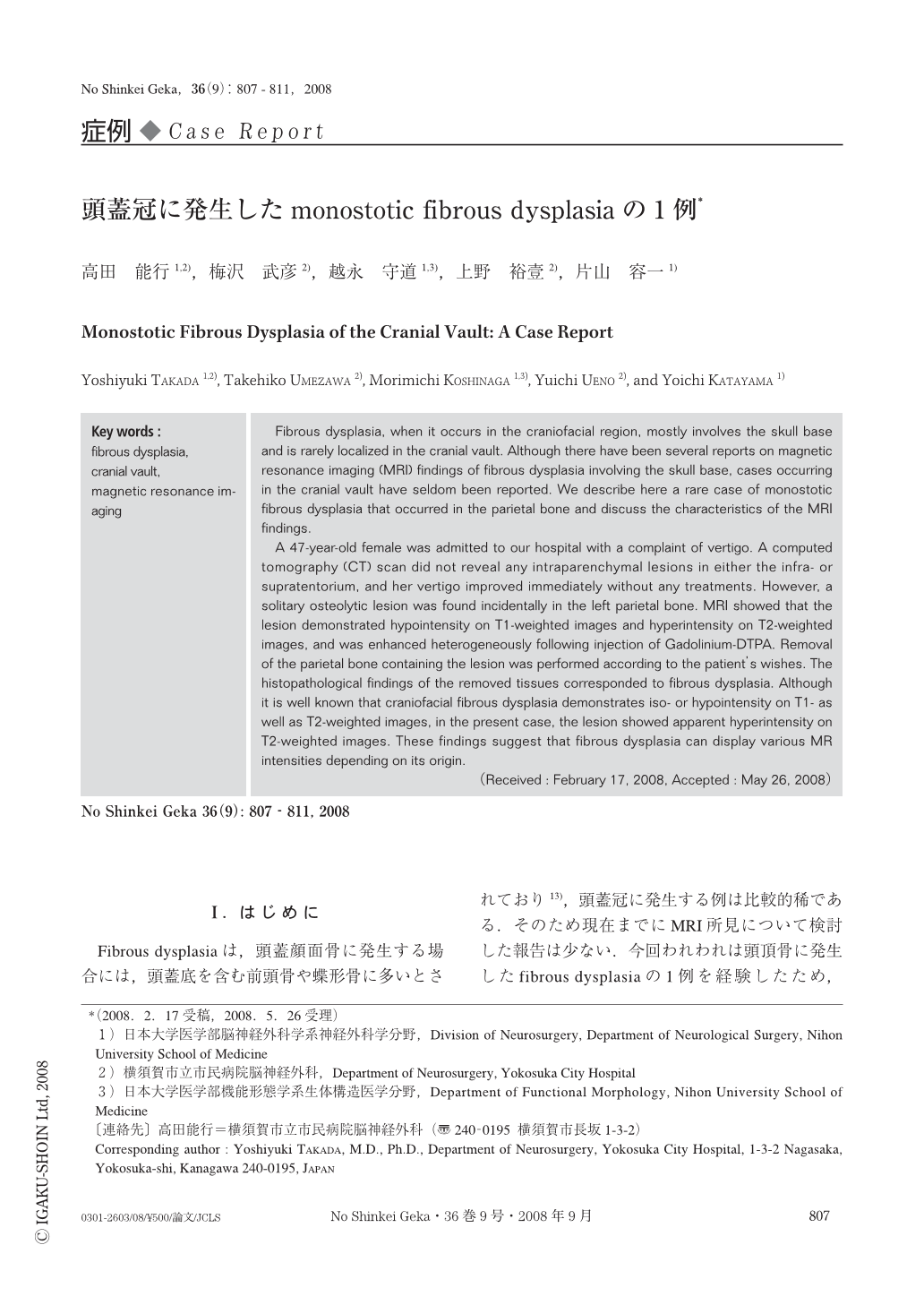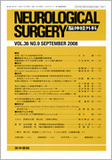Japanese
English
- 有料閲覧
- Abstract 文献概要
- 1ページ目 Look Inside
- 参考文献 Reference
Ⅰ.はじめに
Fibrous dysplasiaは,頭蓋顔面骨に発生する場合には,頭蓋底を含む前頭骨や蝶形骨に多いとされており13),頭蓋冠に発生する例は比較的稀である.そのため現在までにMRI所見について検討した報告は少ない.今回われわれは頭頂骨に発生したfibrous dysplasiaの1例を経験したため,MRI所見を中心に文献的考察を加えて報告する.
Fibrous dysplasia, when it occurs in the craniofacial region, mostly involves the skull base and is rarely localized in the cranial vault. Although there have been several reports on magnetic resonance imaging (MRI) findings of fibrous dysplasia involving the skull base, cases occurring in the cranial vault have seldom been reported. We describe here a rare case of monostotic fibrous dysplasia that occurred in the parietal bone and discuss the characteristics of the MRI findings.
A 47-year-old female was admitted to our hospital with a complaint of vertigo. A computed tomography (CT) scan did not reveal any intraparenchymal lesions in either the infra- or supratentorium, and her vertigo improved immediately without any treatments. However, a solitary osteolytic lesion was found incidentally in the left parietal bone. MRI showed that the lesion demonstrated hypointensity on T1-weighted images and hyperintensity on T2-weighted images, and was enhanced heterogeneously following injection of Gadolinium-DTPA. Removal of the parietal bone containing the lesion was performed according to the patient's wishes. The histopathological findings of the removed tissues corresponded to fibrous dysplasia. Although it is well known that craniofacial fibrous dysplasia demonstrates iso- or hypointensity on T1- as well as T2-weighted images, in the present case, the lesion showed apparent hyperintensity on T2-weighted images. These findings suggest that fibrous dysplasia can display various MR intensities depending on its origin.

Copyright © 2008, Igaku-Shoin Ltd. All rights reserved.


